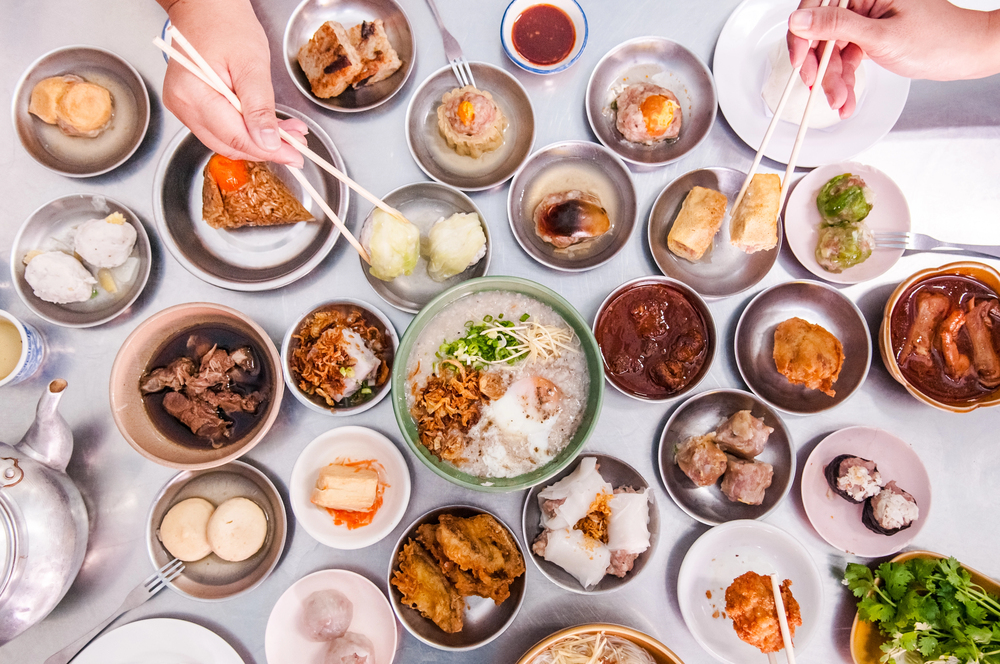Shenzhen, located in Guangdong Province, is at the heart of authentic Cantonese cuisine, which is served with a unique local twist. But the city’s food scene goes far beyond dim sum and roast goose. Its transformation from a fishing village to a global megacity brought flavors from across China: Sichuan spice, Hunan heat, and Dongbei dumplings all found a home here.
Where to eat in Shenzhen requires understanding its dual food identity. One side shows refined Cantonese seafood recipes that families have guarded for generations. The other? Bold regional flavors people dragged here when moving for factory jobs and tech gigs. Both deserve stomach space and attention. For more insights, explore our Food Guide: Cantonese vs Local Specialities to taste the full spectrum of Shenzhen’s cuisine.

The Cantonese Cooking Philosophy
Cantonese food in Shenzhen restaurants puts fresh ingredients first. When ingredients are top-quality, there’s no need to hide them under heavy sauces.
Walk into any Cantonese kitchen and notice how chefs smell, touch, and examine everything before cooking starts.
Steaming, quick stir-frying, attentive braising, that is the way Cantonese kitchens work. The addition of ginger, scallions, and light soy sauce forms the base. Sugar cuts salt—rice wine layers in complexity.
Result? Tasting actual chicken, actual fish, and actual vegetables instead of just chili oil masking everything underneath.
- Why Seafood Dominates
Live fish tanks outside restaurants aren’t just for show—they prove the kitchen sources fresh seafood daily. Pick your fish while it’s still swimming, watch it get weighed, and enjoy it cooked within minutes.
Signature dishes like steamed fish with ginger, salt-and-pepper squid, and simple lobster preparations highlight freshness over flair. Quality seafood speaks for itself—no heavy sauces or tricks needed.
- Dim Sum Culture
Bamboo steamers with har gow, siu mai, and char siu bao aren’t just for breakfast; they’re a full-blown family ritual. Three generations camp at tables for hours, plowing through cart after cart while gossiping over tea. Grandmas argue about whose har gow is better. Kids steal char siu bao from their parents’ plates. Aunties flag down cart ladies for specific items they spotted three tables away.
Making proper dim sum takes years. Wrappers are folded with remarkable precision—too thick, and they turn doughy; too thin, and they tear at the touch. The fillings strike a perfect balance of texture and flavor, all served piping hot in stacked bamboo baskets, gliding between tables.
- Roasting Standards
Whole roasted ducks and char siu hang in restaurant windows facing the streets. That glossy skin on Cantonese roast goose needs days of prep and oven timing so precise it’s almost stupid.
It’s all in the technique—marinate overnight, air-dry for hours, baste nonstop, and roast at precise temperatures. One mistake, and the skin loses its crackle or turns dry. That’s the difference between an average roast joint and the spots locals line up for every day.
Shenzhen’s Real Food Identity
Local food in Shenzhen goes far beyond traditional Cantonese cuisine. The city’s population exploded from just 30,000 to over 12 million in four decades—and each newcomer brought a taste of their home region, creating a vibrant mix of flavors from all across China.
People can change cuisines every week. On Monday, it is Cantonese seafood; on Wednesday, Sichuan hotpot; and on Friday, Dongbei dumplings. Nobody sticks to one thing.
Morning Rush, Regional Flavors: Shenzhen’s Breakfast Battle
Morning meals prove this mix. Business district streets before 9 AM? Total war zone of hometown flavors battling for commuters.
Popular spots covering regions:
- Chongqing noodle joints—spicy xiaomian with pickled veg
- Tianjin jianbing stands—egg crepes folded crispy
- Shanxi roujiamo vendors—flatbread stuffed with braised pork
- Shandong baozi shops—steamed buns, various fillings
- Fujian oyster omelets—sweet potato starch style
- Guangxi rice noodle spots—proper bone broth
- Henan spicy soup carts—thick, peppery morning fuel
- Yunnan rice noodles—cross-bridge style
These places pack tight with locals scarfing breakfast before metro rides. Each stall = someone’s hometown recipe surviving competition.
Street Markets Tell Truth
Dongmen’s food streets pack incredible diversity into a few buzzing blocks—Changsha stinky tofu, Xinjiang lamb skewers, Hubei spicy crawfish, and mala tang on every corner. These aren’t tourist traps; they’re where real residents come for a taste of home.
Read more for the latest city news and updates in our Shenzhen guide.
Must-Try Cantonese Classics
These dishes showcase what Shenzhen restaurants do best—authentic Cantonese cuisine in its pure form. Start with the fundamentals and skip the overblown fusion twists.
- Fish steamed in Ginger and Scallions.
Ultimate kitchen test. Whole fish—grass carp, garoupa, sea bass—steamed just barely cooked. Fresh ginger, scallions, and smoking-hot peanut oil finish tableside with a sizzle.
Simple dish, brutal to perfect. The flesh should flake easily yet stay moist, with bones sliding clean. Skilled Cantonese chefs nail it every time—order it and you’ll quickly see whether a restaurant knows its craft or is just pretending.
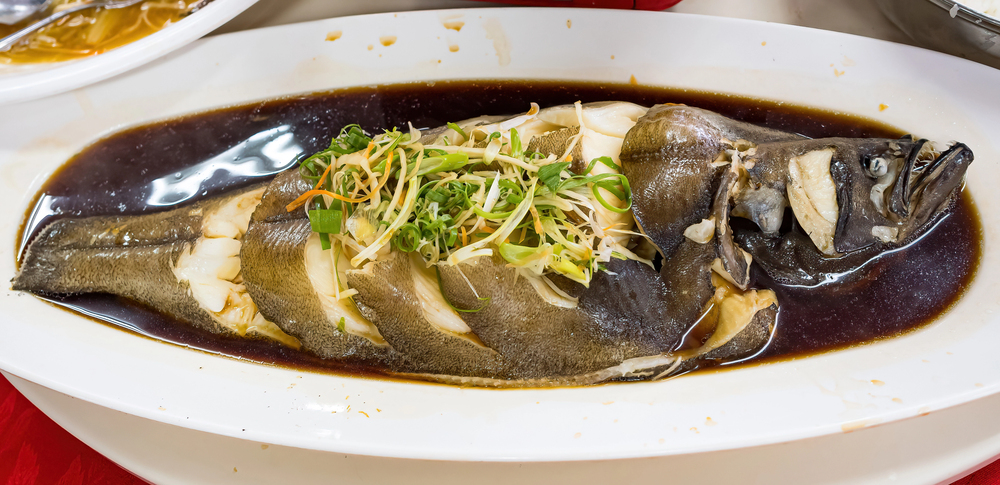
- Dim Sum Essentials
Must-orders at legit spots:
- Har gow: Shrimp dumplings, made with crystal wrappers.
- Siu mai: Open dumplings of pork, with fish roe on top.
- Char siu bao: Fluffy buns, BBQ pork hidden inside
- Cheung fun: Silky rice rolls, shrimp or beef
- Phoenix claws: Chicken feet, black bean sauce
- Pai guat: Spare ribs, fermented black beans
- Lo mai gai: Sticky rice and lotus leaf, bits of chicken.
- Egg tarts: Puff pastry, custard.
- Turnip cake: Fried hard outer layer, tender inner one.
Phoenix claws and pai guat are the real test—tourists shy away, but true food lovers know it’s all about texture, not Instagram appeal.
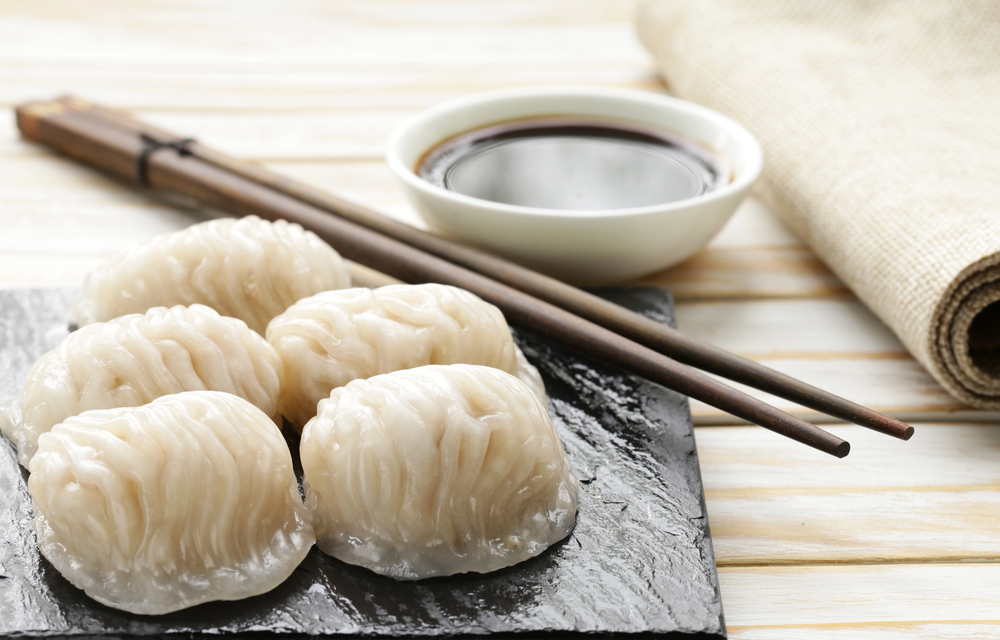
- Roast Meats (Siu Mei)
Cantonese BBQ shops proudly display their craft in the window—char siu, pork shoulder roasted in a sweet-savoury glaze until the edges caramelize, and siu yuk, pork belly with perfectly crackling skin over tender meat. Order a mixed three-meat platter over rice, and you’ll instantly understand those long lunch lines—the balance of texture and glaze is addictive from the first bite.

- Wonton Noodle Soup
Delicate shrimp wontons float in a crystal-clear broth with springy egg noodles. The soup tastes light yet rich—like a pure shrimp-and-pork concentrate. Each wonton encases a whole or half shrimp, visible through the paper-thin skin. The best shops make them hourly, ensuring every bowl is fresh and never soggy.
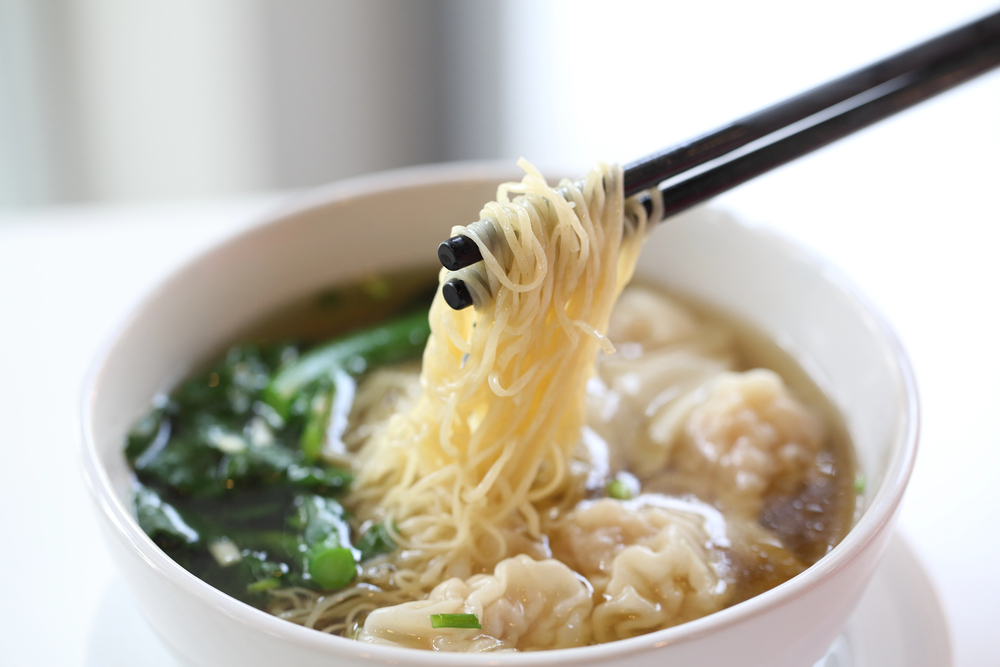
- Clay Pot Rice
Rice cooks in small clay pots over charcoal, making crispy burnt bits on the sides and bottom. Raw toppings—lap cheong, salted fish, chicken, spare ribs—from rice steam. The pot comes sizzling.
Add dark soy sauce to it, stir hard, and scrape off any rough caramelised bits—pure comfort during the brief winter when temps drop.
For more ideas on the Food guide: Cantonese vs local specialities, check out Play and Explore for detailed guides and local tips.

Regional Specialities Locals Order
Local cuisine goes past Cantonese into territory tourists skip. These show what Shenzhen folks actually order when not entertaining foreigners.
- Chaoshan Beef Hotpot
From the Chaoshan region, Shenzhen grabbed it hard. Pure beef bone soup stays clear and is best without excessive spices. Beef cuts are hand-sliced tableside at decent places.
Each cut needs precise timing—5 seconds to 2 minutes max. Locals judge harshly if you overcook premium cuts. Weekend queues hit 40-50 minutes at famous chains.

- Shunde Fish Dishes
Shunde restaurants specialise in freshwater fish, which is prepared differently from mainstream Cantonese cuisine. Techniques obscure textures and flavors foreigners rarely see.
Yu sheng—sashimi-style fish slices with peanuts and sesame oil—pairs with milk-poached fish so tender it melts, and fish skin salad that shows off razor-sharp knife skills. Each dish demands absolute freshness and serious technique.

- Hakka Comfort Food
The Hakka people have deep roots in Guangdong, and their influence is everywhere in Shenzhen’s food scene. From salt-baked chicken wrapped in paper and buried in hot salt to stuffed tofu with minced meat and pork belly with preserved mustard greens, Hakka dishes bring bolder, heartier flavors than most Cantonese spots usually dare to serve.
More garlic, more preserved ingredients, heartier preparation from Hakka nomadic history, and moving through the southern Chinese mountains. These hearty dishes stick to the ribs—perfect for colder seasons when lighter fare just doesn’t satisfy. The Hakka restaurants are usually family-owned, and their food has been prepared using the exact recipes for three or four generations without much variation.

- Late-Night Skewers
After dark, BBQ skewer stalls pop up citywide. Not traditional Cantonese, but part of local cuisine culture, defining modern nightlife.
Grilled oysters loaded with garlic, meat skewers heavy on cumin and chilli, and grilled vegetables fuel late sessions. Ice-cold beer matches the peak Shenzhen experience. Stalls run till 2 A.M, serving night owls and drunk folks.
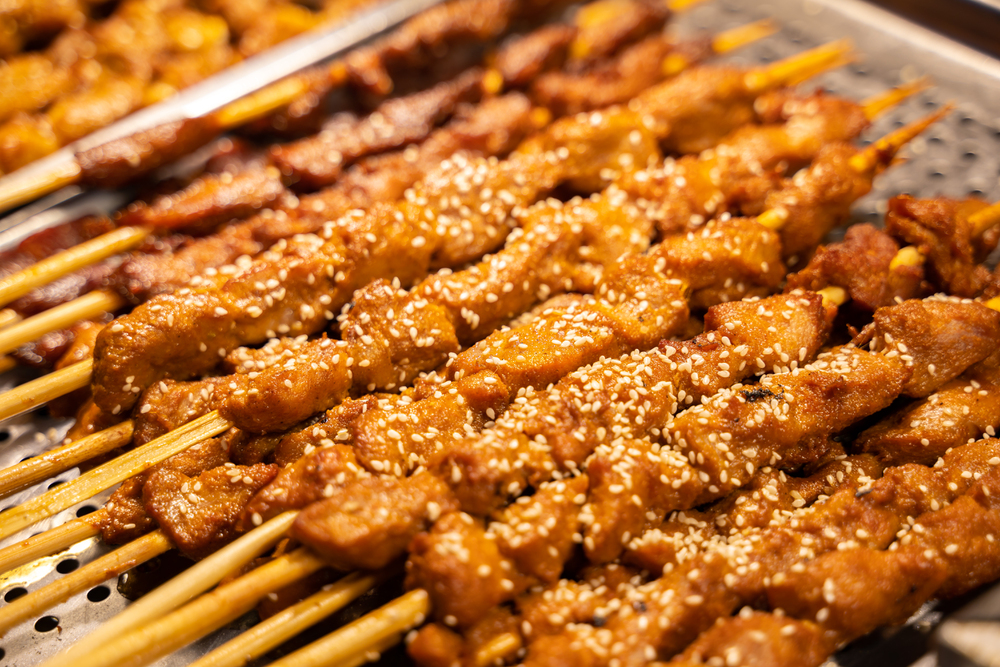
Where to Eat in Shenzhen: Districts
Each district built its own food vibe. Where to eat in Shenzhen starts matching neighborhoods to taste and wallet.
- Futian District
Business center packs upscale Cantonese restaurants. COCO Park and Xiangmihu offer dozens of options within walking distance—restaurant hopping works.
Traditional eateries and modern fusion spots coexist easily in Shenzhen. Most fall into the mid-range bracket, though the food courts at CITIC City Plaza provide plenty of affordable options for a quick, satisfying lunch.
- Luohu District
Dongmen Old Street is the place to go in Shenzhen for street food chaos and cheap eats. Covered markets and maze alleys contain endless vendors and regional shops serving every province’s specialties. Crowds pack tightly on weekends; moving forward takes effort.
Luohu Commercial City’s upper floors hide noodle shops and hotpot joints locals hit exclusively. The best food comes from worn storefronts, with zero English anywhere. Plastic stools, fluorescent lights, and sauce-stained menus—these spots serve killer food despite looking rough around the edges.
- Nanshan District
Tech workers flood here, demanding diverse fast dining. Coastal City houses Cantonese, Korean, Japanese, and Western restaurants, all under one roof.
Shekou, near the Shekou Ferry Terminal, is packed with seafood restaurants offering ocean views—favorites among long-term expats who know where to find some of the city’s best coastal dining.
- Baoan and Longhua
Outer areas keep a stronger traditional character. Family-run Cantonese places give authentic, less tourist experiences with multi-generation recipes.
Prices run lower, portions are bigger, and foreign items are rare. Exploring the food scene of Shenzhen’s districts is easier once you understand the metro connections.
- Yantian District
The coastal District specializes in seafood caught in the South China Sea in the mornings. Xiaomeisha and Dameisha beaches are lined with restaurants where folks pick live seafood by specifying cooking.
Morning catches swim in tanks by afternoon. Worth a 40-minute meride ride from downtown Futian.
Hidden Food Gems
The best meals come from places that lack expat Facebook groups. Take extra effort but deliver authentic experiences.
- Wet Market Breakfast Stalls
Cooked food sections can provide an authentic Cantonese breakfast. Vendors prepare fresh congee with century egg, rice rolls steamed to order, and turnip cakes pan-fried crispy for shoppers and early risers. Despite being humble stalls, the quality is often higher than that of many restaurants because vendors source wholesale directly from them. Feels genuinely local—cash and basic Chinese help. English won’t work, but pointing does.

- Factory Canteens
Industrial lunch canteens serve workers who demand good food quickly and cheaply: speed, value, and genuine flavor over ambiance.
Daily menus shift based on availability and the chef’s mood. Never in the guide, but asking workers leads here. Shenzhen’s business districts hide dozens of industrial buildings.
- University Restaurants
Near Shenzhen University and Southern University of Science and Technology, budget spots cater to students on a budget. Quality-to-price ratios shine from fierce competition.
Regional cuisines, Cantonese student-level, while maintaining decent standards. Cash works, but mobile payments are spreading.
Do’s and Don’ts
Adhere to these rules to prevent embarrassing situations and to respect the local dining culture. Most mistakes won’t ruin your meal, but getting these right earns appreciation.
Always Do
- Order one dish per person plus rice
- Try weird ingredients
- Use serving spoons for shared dishes
- Download Dianping for restaurant photos
- Hit markets early in the morning
- Ask locals for recommendations
- Check seafood prices first
- Carry tissues
- Set up WeChat Pay and Alipay
Never Do
- Expect Cantonese food to be spicy
- Stick chopsticks vertically in rice
- Order everything at once
- Ignore safety basics
- Skip the tea
- Tip at local spots
- Waste food
- Show up for dim sum after 2 PM
- Touch shared dishes with personal chopsticks
Food Apps and Tools
Technology makes navigating Shenzhen’s food scene way easier. Download these before you start hunting for your next meal.
- Dianping: Chinese Yelp with coupons. Essential for finding restaurants, reading reviews with photos, and checking prices. English exists, but the Chinese version gives details.
- Meituan: Deal-based and reservation delivery. Displays restaurants around that are available in real time.
- Translation Tools: Google Translate camera works for menus. Point your phone at Chinese text to get an overlay translation. Not perfect, but spots ingredients and cooking methods.
FAQ
Q1: Is Cantonese food spicy?
No. Veritable Cantonese cuisine Shenzhen restaurants offer new tastes with minimal spiciness—unlike the Sichuan, Hunan, or Chongqing cuisines.
Q2: What should you spend on food?
50-100 every day casual, 150-250 midtown food or premium seafood. Street food ¥20-40. Local food satisfies all budgets.
Q3: Best district for variety?
Futian and Nanshan are the most diverse scenes with traditional Cantonese and regional cuisines. Most mid-range to upscale with English support.
Q4: How to tell if the seafood is fresh?
Live tanks with active swimming seafood. Clear eyes, tight shells. Smells like the ocean, not ammonia.
Q5: Do you need Chinese to eat well here?
Helps, but not essential. Expat areas have English menus, translation apps work well enough, and pointing at other tables gets the job done. Food delivery apps show photos too.
Conclusion
Shenzhen’s food scene balances a dual identity—deeply rooted in Cantonese traditions while embracing regional flavors brought by millions of migrants. Experiencing both sides gives you the city’s full culinary story.
Cantonese food establishments in Shenzhen maintain traditional techniques, emphasizing fresh ingredients and subtle flavors, while broader local cuisine reflects the multicultural reality resulting from explosive growth. When it comes to refined dim sum or spicy street food, knowing where to eat in Shenzhen involves recognizing these dual cultures coexisting citywide.
Start with Cantonese classics to understand Guangdong’s culinary roots. Branch into the regional specialties locals eat daily. Use neighborhood guides and trusted resources to navigate Shenzhen’s vast and ever-evolving food landscape with confidence.
Check out more practical guides on ShenzhenPost to make your time in this city smoother.

